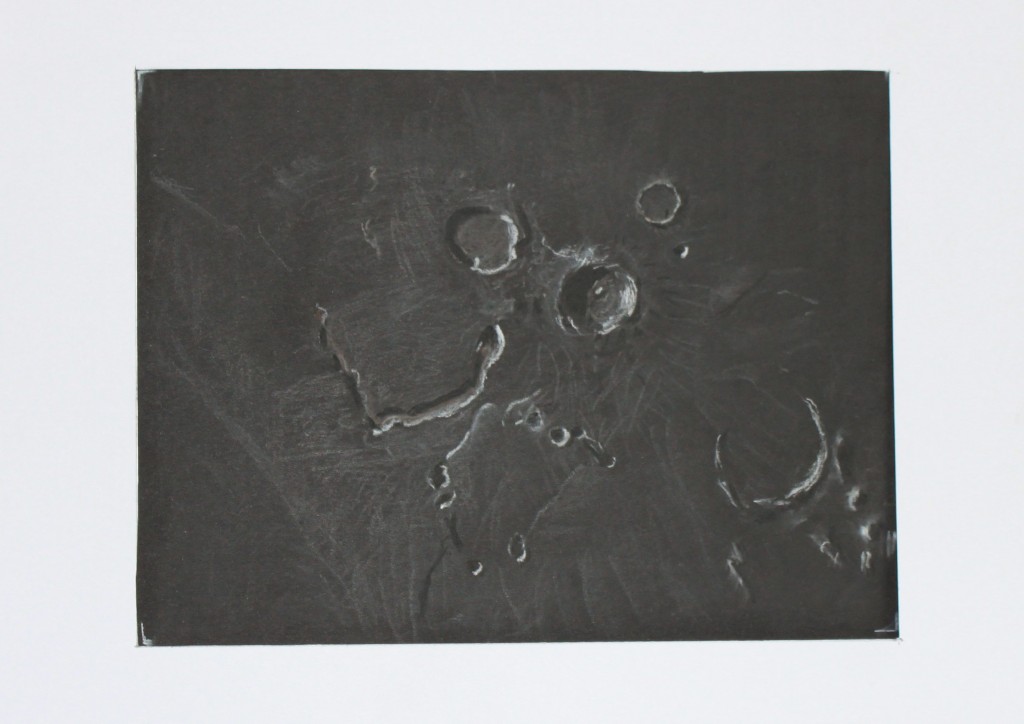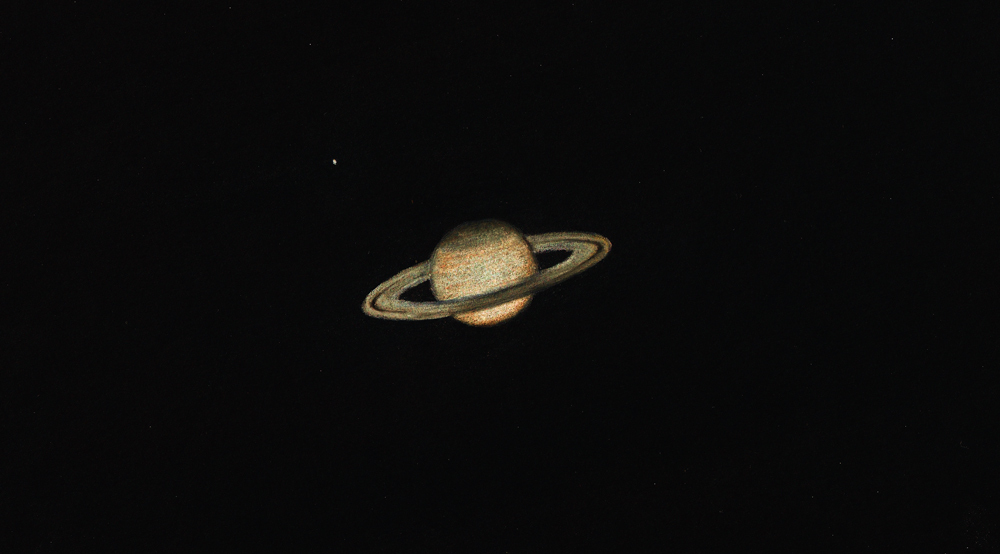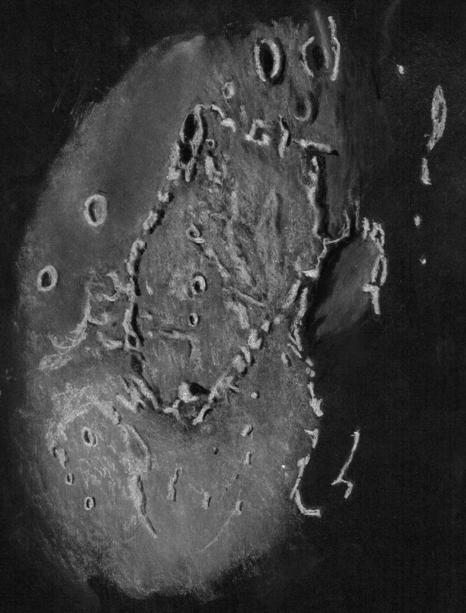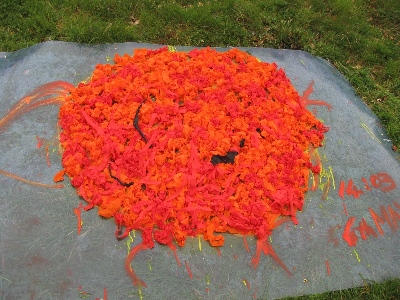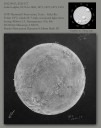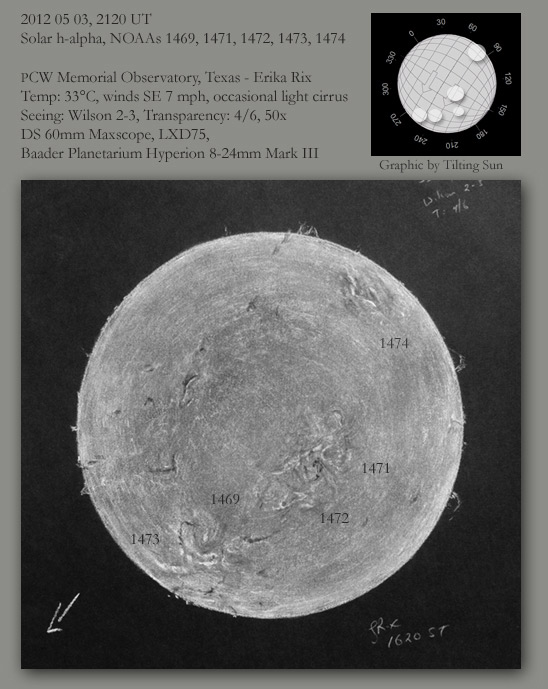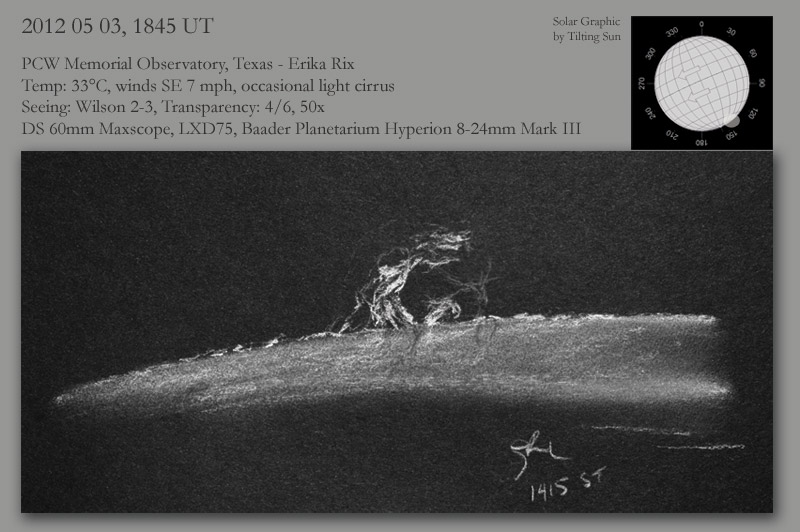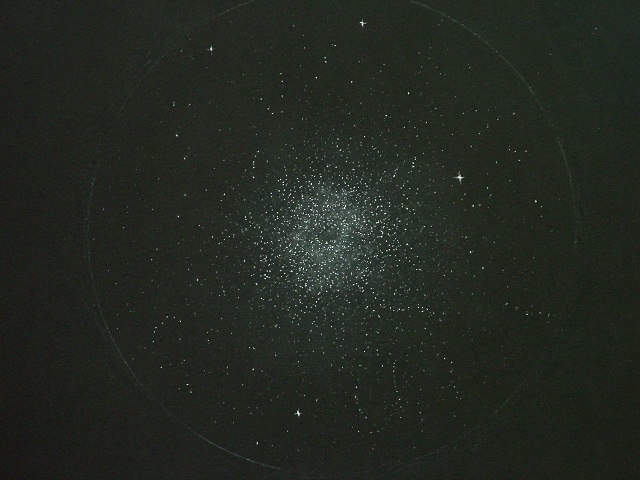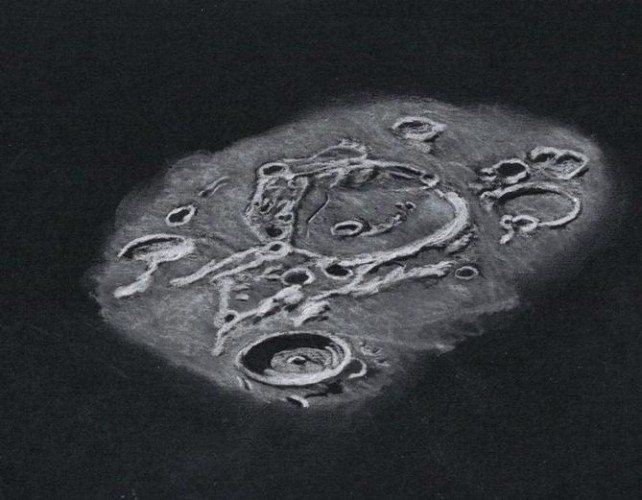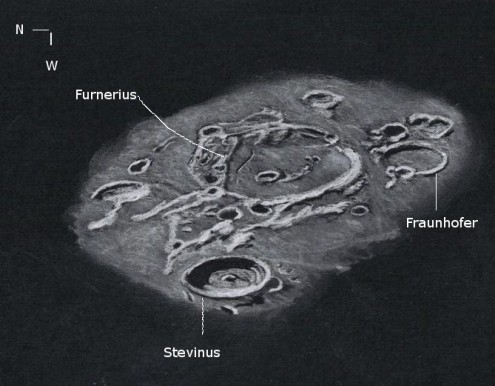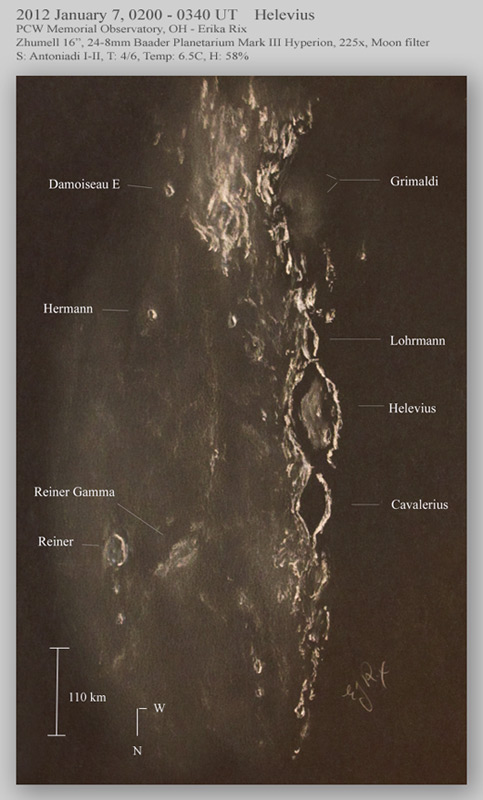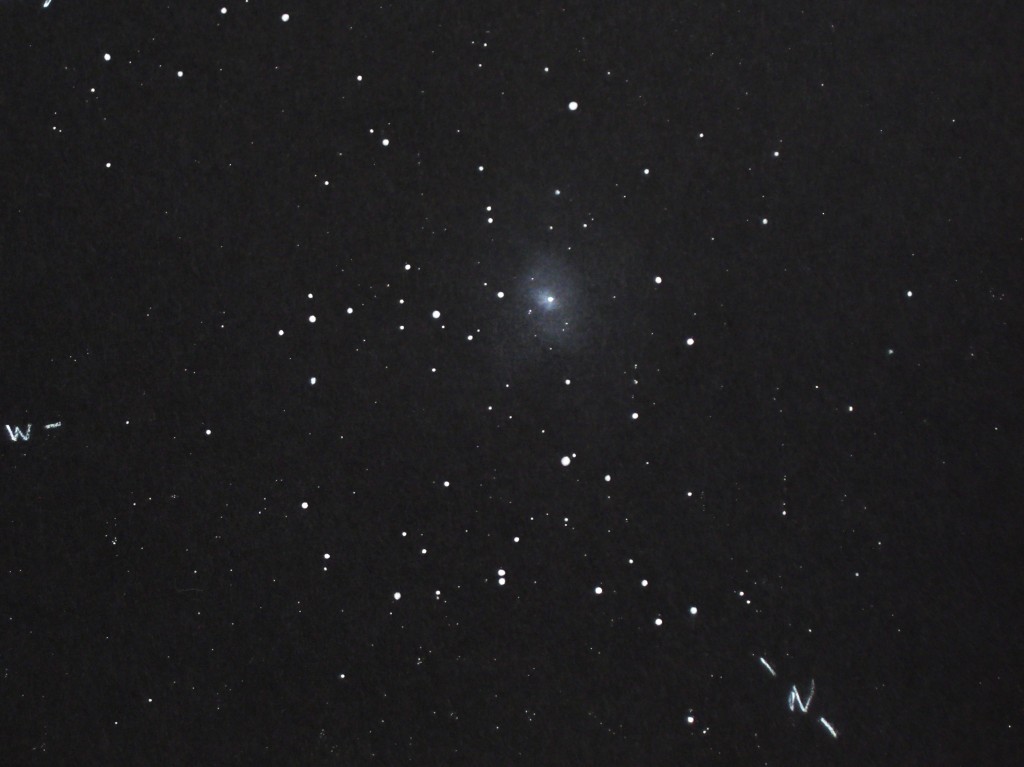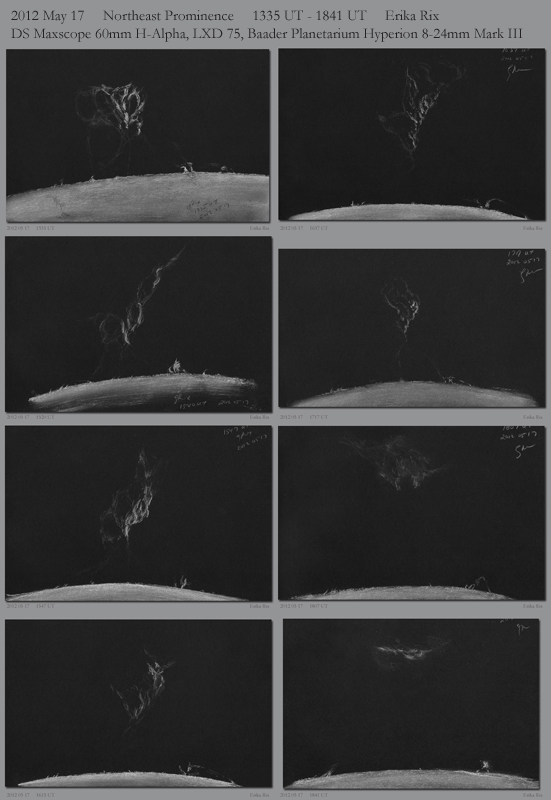
2012 05 17, 1245 UT – 1845 UT
NOAAs 11476, 11477, 11478, 11479, 11482, 11484, NE Prominence
PCW Memorial Observatory, Texas – Erika Rix
www.pcwobservatory.com
Temp: 20-30C, calm – S 5mph, clear.
Seeing: Wilson 4.8-1.2, Transparency: 5/6-4/6, 50x.
Maxscope DS 60mm H-alpha, LXD75, Baader Planetarium Hyperion 8-24mm Mark III.
Sketches created at the eyepiece with black Strathmore Artagain paper, white Conte’ crayon and pencil, white Prang color pencil, Derwent charcoal pencil, black oil pencil.
Link to gallery of individual sketches within the sequence.
During the time I observed, a very large prominence off the northeast limb was enlarging and in the process of ejecting as it broke free from the magnetic fields supporting it. I’ve never visually witnessed that large of a prominence breaking away from the Sun before. What really stunned me was how bright it remained over several hours that far off the limb. I grabbed an 8-sketch sequence spanning over 6 hours of the event, not including the full disk rendering I recorded earlier in the day. The last 35 minutes of my session, the prominence became very faint and diffuse. I stopped seeing any connection from the limb after 1717 UT. Of course, that doesn’t necessarily mean there wasn’t, but was perhaps too faint for my tired eyes to see.


